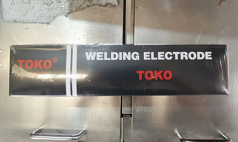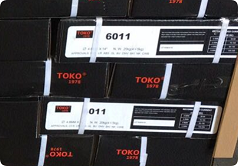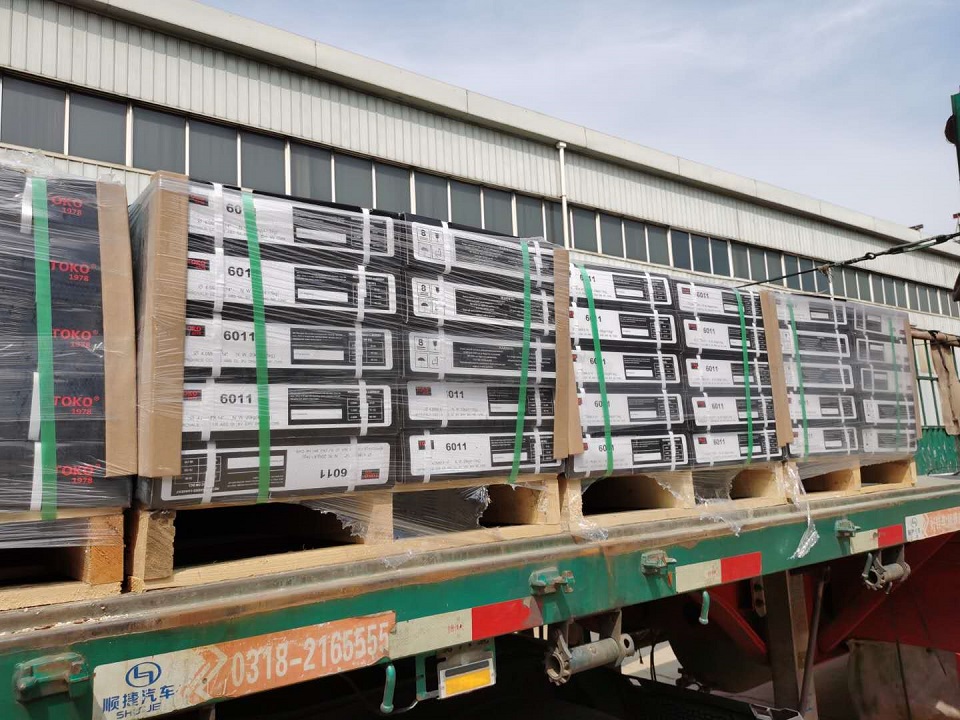
TOKO AWS A5.1 E6011 E6011 welding rods are a type of rutile-coated carbon steel welding rod. They are designed for general welding applications and are suitable for use with both alternating current (AC) and direct current (DC) power sources. These rods are often used in vertical and overhead welding positions due to their ability to produce a smooth, slag-free weld bead..
E6011 rods have good
arc stability and are easy to strike and maintain. They produce a strong,
ductile weld that is suitable for welding low-carbon steel and some
low-alloy steels. However, they are not recommended for welding
high-strength or high-tensile steels due to their lower tensile strength
compared to other types of welding rods. E6011 rods are commonly used in a wide range of welding applications, including construction, shipbuilding, and automotive repair. They are also suitable for welding thin gauge metals and can be used with or without a flux. E6011 Applications & Uses
The E6011 electrode is an all-purpose welding rod that can be used for repair and fabrication works. It is also applicable for welding large diameter pipelines with wall thickness of less than 12.5 millimeters.
The E6011 welding rod is suitable for welding of mild steels, galvanized steels and certain low alloy steels. The coating of this sturdy steel electrode produces a smooth spray-type arc, forceful enough to achieve deep penetration while leaving a thin layer of easily cleaned up slag. Also, the coating endows the 6011 with very high arc stability, as well as greater deposition efficiency and flexibility, while producing little spatter.
Here are some key characteristics of E6011 welding rods: 1. Strong Penetration Ability: Due to the high amount of hydrogen produced during welding, E6011 electrodes have strong penetration ability, making them suitable for welding thicker materials or joining thicker sections. 2. High Current Density: The high current density of E6011 electrodes allows for efficient heat transfer and rapid melting of the base metal, resulting in a strong and secure weld. 3. Versatile Use: E6011 welding rods can be used for both direct current (DC) and alternating current (AC)
welding, providing flexibility in various welding applications. 4. Suitable for Thin Materials: Although they are known for their strong penetration ability, E6011 electrodes can also be used for welding thinner materials, especially when a low heat input is required to avoid warping or distortion. 5. Good Weld Appearance: The welds produced by E6011 welding rods typically have a smooth and uniform appearance, providing a visually appealing result. It's important to note that when welding with E6011
electrodes, appropriate welding techniques and safety measures should be
followed to ensure the best welding results and to prevent any potential
hazards. Additionally, it's always recommended to consult with welding
experts or refer to relevant literature for specific applications and
welding conditions.
Download AWS E6011
MTC and
MSDS
AWS A5.1
E6011 Chemical
Compositions (%)
AWS A5.1
E6011 Mechanical
Properties
C
Mn
Si
S
P
Balance
0.098
0.67
0.20
0.022
0.023
---
Yield Strength (MPa)
Tensile Strength
(MPa)
Elongation(%)
Akv
(J/℃)
430
530
30
78J / -30℃
| Electrode Diameter (MM) | Electrode Length (MM) | AMP Range (A) |
|---|---|---|
| 2.5 | 300 / 350 | 30 ~ 50 |
| 3.2 | 350 | 70 ~ 100 |
| 4.0 | 400 | 90 ~ 140 |
| 5.0 | 400 | 150 ~ 200 |
The information contained or otherwise referenced herein is presented only as “typical” without guarantee or warranty, and TOKO Corporation expressly disclaims any liability incurred from any reliance thereon. Typical data and Test results for mechanical properties, deposit or electrode composition and other properties were obtained from a weld produced and tested according to prescribed standards, and should not be assumed to be the expected results in a particular application or weldment. Actual results will vary depending on many factors, including, but not limited to, weld procedure, plate chemistry and temperature, weldment design and fabrication methods. Users are cautioned to confirm by qualification testing, or other appropriate means, the suitability of any welding consumable and procedure before use in the intended application.


